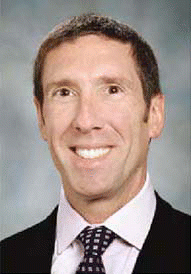After a hiatus associated with a checkered past, gene therapy is again showing promise in several fields of medicine, and otolaryngology is no exception. In separate phone interviews, two experts in gene therapy discussed the applications that otolaryngologists may be seeing in the near future.
Explore This Issue
September 2006Gene therapy is an embryonic field with enormous potential, said Bert W. O’Malley, Jr., MD. He noted that much progress is being made in the field in a quiet way, without the drum roll and spotlight that accompanied the field in the 1980s and 1990s. Dr. O’Malley is the Gabriel Tucker Professor and Chair of the department of otorhinolaryngology-head and neck surgery and co-director of both the Center for Head and Neck Cancer and the Center for Cranial Based Surgery at the University of Pennsylvania Health Systems in Philadelphia.
In theory, it would be easier to paste a little gene therapy on a precancerous lesion and prevent cancer progression rather than treat a large malignant lesion with more radical surgery once it has developed. – – Bert W. O’Malley Jr., MD
Dr. O’Malley pointed out that several important clinical areas within the field of otolaryngology could presently benefit from the application of gene medicine and gene therapy. These areas include head and neck cancer therapy and tumor biology, neurosensory hearing loss and balance disorders, and plastic and reconstructive surgery. Eventually all the subareas of otolaryngology will be touched by the ongoing advances in gene therapy research, he said.
He noted that the field is enjoying a quiet renaissance after earlier problems. Gene medicines were incredibly exciting in the late 1980s to mid-1990s, Dr. O’Malley said. There was a little negative tenor for awhile, based on one incidental complication and lack of corporate investment. In particular, gene therapy got a black eye from a widely publicized clinical trial that ended in 1999 with the death of a young man who had a metabolic disease that was caused by a genetic disease of the liver. After this tragedy, the Food and Drug Administration (FDA) halted many gene therapy trials and both National Institutes of Health (NIH) and corporate funding significantly diminished for this field.
Another expert agreed that gene therapy is emerging from a period of neglect. Gene therapy has had a tumultuous past, and this legacy has created hesitation to pursue gene therapy in the present, said Gary B. Clayman, DMD, MD. There has been almost a dearth of gene therapy research despite its potential. Dr. Clayman is a professor of head and neck surgery and cancer biology at the M. D. Anderson Cancer Center in Houston, Texas.
Gene therapy has had a tumultuous past, and this legacy has created hesitation to pursue gene therapy in the present. There has been almost a dearth of gene therapy research despite its potential. – -Gary B. Clayman, DMD, MD
A 21st Century Renaissance
With this tumult serving as both a backdrop and a caution, gene therapy investigators in the 21st century agree that the field is enjoying a renaissance. They have learned from their colleagues’ errors, and the current thinking in gene therapy research is that new enthusiasm has surfaced for a field that is still very much alive and rapidly growing, Dr. O’Malley said. The field is growing at as rapid a pace as ever, but with more appropriate expectations than in the past.
He distinguished between treatment of genetically based diseases through correcting the genetic abnormality in all or a majority of cells within a tissue or body organ and the specific use of genes for therapeutic purposes. An example of the first case would be pancreatic transplant for type 1 diabetes, because the patient needs a pancreas with a completely different genetic structure. Solving the genetic issue in each cell is much harder than using a gene that, when introduced into the body or an organ, will produce an agent that will alter the disease process without correcting the actual defect within the DNA, he said.
We can use therapeutic genes to correct the process in many different illnesses or diseases within our specialty of otolaryngology, said Dr. O’Malley. In head and neck cancer, for example, investigators are developing genes that halt tumor growth or kill the tumor directly either by injecting the gene into the tumor or through intravenous infusion of genes with targeting mechanisms that are taken up into the tumor cells.
One gene-based treatment for head and neck tumors has advanced into two ongoing Phase III trials, an adenovirus vector inserted with p53 (Advexin). This therapy is being developed for treating clinically advanced, recurrent squamous cell carcinoma of the neck, Dr. Clayman said. These are the only phase III studies regarding gene therapy in head and neck surgery that I know of, he said.
The research on p53 in the adenovirus vector began in 1998, Dr. Clayman said, noting that the resultant Phase I and II studies showed sufficient promise that he and other investigators wanted to study the treatment in a large clinical trial. Although we saw no dose-limiting toxicities, this therapy is restricted to intratumoral injections, he said. We’re not yet able to target the lesion by systemic injection.
In the case of p53, gene therapy is based on a tumor-suppressing gene. Other investigations are focused on other tumor-suppressing genes, such as p16. Other genes of interest address malignant lesions through other mechanisms. For example, thymidine kinase (TK) is an apoptotic gene, and immune-based genes such as interleukin-2 (IL-2) or IL-12 may also have potential in head and neck tumors. Such genes address malignancies by causing a local secretion of immune-stimulating factors.
In his research, Dr. O’Malley and his research partner, Daqing Li, MD, an associate professor of otorhinolaryngology-head and neck surgery at the University of Pennsylvania, where he is also the director of gene and molecular laboratories, have discovered a novel gene that disrupts the important cell process of DNA repair. The gene has not yet been named. When introduced into cancer cells, the gene makes the cancer cells more sensitive to the anti-tumor effects of radiation and/or chemotherapy. The gene, which has shown promise in animal studies, may be able to make radiation and chemotherapy more effective, or may make it possible to use lower doses of either and therefore make treatment less toxic to our patients.
Premalignant Lesions: Beyond Watchful Waiting or Excision
Dr. O’Malley said that gene therapy for premalignant lesions is also an important area of research. This area, in fact, may eventually become one of the hottest areas of gene therapy research that affects the practice of otolaryngology, he said. In theory, it would be easier to paste a little gene therapy on a precancerous lesion and prevent cancer progression rather than treat a large malignant lesion with more radical surgery once it has developed, he said. The problem is proving efficacy. It’s hard to create the long, costly study that proves it, but when it’s done, that will be a big hit.
At this point, the typical options in such cases are watchful waiting or excision. However, the problem with dysplasia or precancerous lesions within the mouth is that they reflect a genetic progression that is generally acquired through the aging process and exacerbated by smoking, alcohol, and other environmental exposures. We lose certain genes over a period of time; the progression concept holds that a cancer cell can then form, Dr. O’Malley said. We presume that dysplasia is a stage of cancer development.
A third option, then, might be to conduct a genetic analysis of the lesion in order to identify its position on the spectrum of progression. We can then put a gene therapy on in the form of a topical medication and can prevent the progression, Dr. O’Malley said. Treatments are still under investigation that tailored to the deficit. For example, if a lesion is deficient in p53 and p16, we may be able to give therapies that secrete these genes.
He noted that treatment with topical p53 has been investigated in national and international clinical trials. Although the treatment may be effective, one obstacle is the delivery system: it has to be directly injected into the lesion, and the injection doesn’t transfer enough genes into enough cells to make a distinct lasting difference, he said. Once the delivery has been improved, gene therapy will be more successful.
Dr. Clayman concurred with Dr. O’Malley that the premalignant setting in a topical formulation is another promising application for p53. As a cancer therapy or preventive agent, p53 seems to work on multiple levels, but its key properties in these settings are its ability to induce apoptosis and to inhibit angiogenesis in malignant cells, Dr. Clayman said.
Hearing Loss and Gene Therapy
No gene therapy has yet been approved for genetically influenced disorders typically seen in otolaryngology offices, Dr. Clayman said.
For hearing loss and balance disorders, the ideal would be to introduce a gene that regenerates hair cells, Dr. O’Malley said. The MATH-1 gene has been studied and shown promise in hair cell generation in animals and cell culture. This is exciting, because hearing loss is a big problem. There is also the possibility of genetic transfer to the ear to prevent the type of hearing loss seen in chemotherapy, which destroys hair cells. This would be a protective protein to prevent hair loss. In a different field, MATH-1 gene therapy or nerve growth factor gene therapy may help with nerve and muscle regeneration in patients with surgically induced damage to the ear, larynx, facial nerves, or other anatomical sites that are often treated by otolaryngologists.
Another issue that could be improved with gene therapy is genetically influenced deafness after treatment with aminoglycosides or certain cancer chemotherapies. In the event that a corrective gene or even a gene that produces a preventative agent for hearing loss could be found, the gene therapy could be given prior to treatment rather to prevent the hearing loss. New classes of antibiotics not developing right now, Dr. O’Malley said. We need to look at other means of dealing with these problems rather than a new antibiotic.
©2006 The Triological Society


Leave a Reply